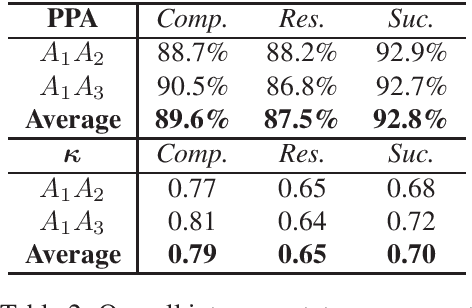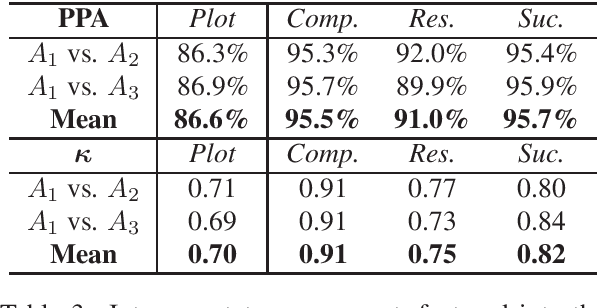A Decomposition-Based Approach for Evaluating Inter-Annotator Disagreement in Narrative Analysis
Paper and Code
Jun 11, 2022


In this work, we explore sources of inter-annotator disagreement in narrative analysis, in light of the question of whether or not a narrative plot exists in the text. For this purpose, we present a method for a conceptual decomposition of an existing annotation into two separate levels: (1) \textbf{whether} or not a narrative plot exists in the text, and (2) \textbf{which} plot elements exist in the text. We apply this method to an existing dataset of sentences annotated with three different narrative plot elements: \textit{Complication}, \textit{Resolution} and \textit{Success}. We then employ statistical analysis in order to quantify how much of the inter-annotator disagreement can be explained by each of the two levels. We further perform a qualitative analysis of disagreement cases in each level, observing several sources of disagreement, such as text ambiguity, scheme definition and personal differences between the annotators. The insights gathered on the dataset may serve to reduce inter-annotator disagreement in future annotation endeavors. We conclude with a broader discussion on the potential implications of our approach in studying and evaluating inter-annotator disagreement in other settings.
 Add to Chrome
Add to Chrome Add to Firefox
Add to Firefox Add to Edge
Add to Edge